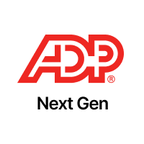Integrate BambooHR with your product—along with any other ATSHR & payroll application
Connect your product to all the applications your customers use via Merge's Unified API to close more deals, retain customers, and expand to new markets








Sync BambooHR data
Employments
The Employment object is used to represent a job position at a company. If an integration supports historical tracking of employments, it will be reflected in the data. If not, a new Employment object will be created whenever there is a change in job title or pay. The effective_date field should be used to order Employment objects, with the most recent date corresponding to the latest employment record for an employee.
FAQ on integrating with BambooHR API
What BambooHR endpoints does Merge interact with?
Merge interacts with several BambooHR endpoints, including Employee Data, Employment Information, Groups, and more, to pull and sync relevant data. You can also leverage Merge’s Authenticated Passthrough Request feature for endpoints that fall outside of Merge’s scope.
Learn more about the endpoints Merge supports.
How often does Merge sync data with BambooHR?
Merge can sync BambooHR data at various intervals, depending on your plan and the Common Model you’re interested in. That said, Merge typically supports hourly to daily syncs for BambooHR.
If you need to sync data outside of these schedules, you can trigger immediate syncs using the Force Resync endpoint, or set up webhooks for real-time updates.
Learn more about Merge’s sync frequencies for BambooHR.
What customers use Merge’s BambooHR integration?
Countless customers use the integration. This includes Ramp, 15Five, BILL, Bonusly, and Electric.
You can learn about how they use Merge’s BambooHR integration—and several other HRIS integrations—by visiting this page.
Can I map custom BambooHR fields?
Yes, with Merge's Field Mapping feature you can map custom BambooHR fields to Merge's Common Models, ensuring flexible data syncs between customers' instances of BambooHR and your product.
Can I retrieve raw BambooHR data?
Yes, Merge allows you to access raw data through the Remote Data feature, which retrieves data from BambooHR in its original format as provided by the API.
Is Merge Single-Tenant or Multi-Tenant?
Merge offers both Multi-Tenant and Single-Tenant environments. The Multi-Tenant option is the default for most customers and is hosted on AWS servers, while the Single-Tenant environment is available for purchase as part of the Enterprise plan. Single-tenant environments offer dedicated infrastructure for additional security and customization.
How much does it cost to integrate with BambooHR using Merge?
It depends on the pricing plan you choose. Merge offers a Launch Plan, which is free for the first 3 production-linked accounts. If you need more, the cost is $650/month for up to 10 linked accounts, and $65 per account after that. Larger-scale users can explore the Professional or Enterprise plans, which offer additional features and support.
For more details, visit Merge's pricing page.
Is BambooHR a Merge customer?
Yes, Merge works with BambooHR and many other enterprise companies, including Remote, Ramp, Korn Ferry, Handshake, Brex, and Drata.
How can I use a BambooHR integration?
The use cases largely depend on the product you offer. That said, it can help you auto-provision users in your product; streamline gifting workflows; analyze employee compensation; assign trainings to employees on time, and more.
Learn more about how you can use the BambooHR integration here.
New Year's Day - 1/1/2024Memorial Day - 5/27/20244th of July - 7/4/2024Labor Day - 9/2/2024Thanksgiving Day - 11/28/2024Day after Thanksgiving - 11/29/2024Christmas Eve - 12/24/2024Christmas Day - 12/25/2024

Trusted to power integrations at
























Make integrations your competitive advantage
More sales, less code, fewer headaches
Focus on your core product
Stop diverting your engineers to yet another integration and let them get back to work.
Give customer success a break
Manage your simplified integration issues in a single pane. No therapist required.
Stop losing sales due to integrations
Launch integrations in days, not quarters. Your sales team will thank you.
.png)

Integration authentication that feels like magic
Merge seamlessly manages authentication and authorization on behalf of your customers.
Offer account linking and permission controls to your users with Link for a customizable frontend or with Magic Link for URL-based authorization
The toolkit for all your integration needs
We make integrations painless with accessible API design, dead-simple SDKs, and beautiful documentation that we agonize over.
1from merge import Merge
2
3client = Merge(
4 account_token="YOUR_ACCOUNT_TOKEN",
5 api_key="YOUR_API_KEY",
6)
7client.hris.employees.list()import { MergeClient, Merge } from '@mergeapi/merge-node-client';
const merge = new MergeClient({
apiKey: 'YOUR_API_KEY',
accountToken: 'YOUR_ACCOUNT_TOKEN',
});
employee = await merge.hris.employees.list()
ApiClient.instance.authentications.tokenAuth = {
type: 'bearer',
accessToken: 'API_KEY',
};
new EmployeesApi().employeesList('ACCOUNT_TOKEN', {}, (data) => {
console.log(data);
});import (
"context"
"fmt"
merge "github.com/fern-api/merge-go"
mergeclient "github.com/fern-api/merge-go/client"
"github.com/fern-api/merge-go/hris"
)
client := mergeclient.NewClient(
mergeclient.ClientWithAuthApiKey("<YOUR_API_KEY>"),1ApiClient client = Configuration.getDefaultApiClient();
2client.setBasePath('https://api.merge.dev/api/ats/v1');
3ApiKeyAuth tokenAuth = client.getAuthentication('tokenAuth');
4tokenAuth.setApiKey('API_KEY');
5CandidatesApi apiInstance = new CandidatesApi(client);
6apiInstance.candidatesList('ACCOUNT_TOKEN');import com.merge.api.MergeApiClient;
import com.merge.api.resources.hris.employees.requests.EmployeesRetrieveRequest;
import com.merge.api.resources.hris.types.Employee;
MergeApiClient mergeClient = MergeApiClient.builder()
.accountToken("ACCOUNT_TOKEN")
.apiKey("API_KEY")
.build();
Employee employee = mergeClient.hris().employees().list(
EmployeesRetrieveRequest.builder()
.includeRemoteData(true)> {
"id": "0958cbc6-6040-430a-848e-aafacbadf4ae","remote_id": "19202938","employee_number": "2","company": "8d9fd929-436c-4fd4-a48b-0c61f68d6178","first_name": "Dirna","last_name": "Emanuel","display_full_name": "Dirna Emanuel",
"username": "dirnaemanuel",
"groups": [

Case study
%201%20(1).webp)
How Drata increases customer value and spends 80% less time managing integrations
Working with Merge’s Unified API and beautiful React component took less than a sprint to integrate, test, and release.
Supported ATS platforms
Supported HRIS platforms
Make integrations your competitive advantage
Stay in touch to learn how Merge can unlock hundreds of integrations in days, not years

















































































































